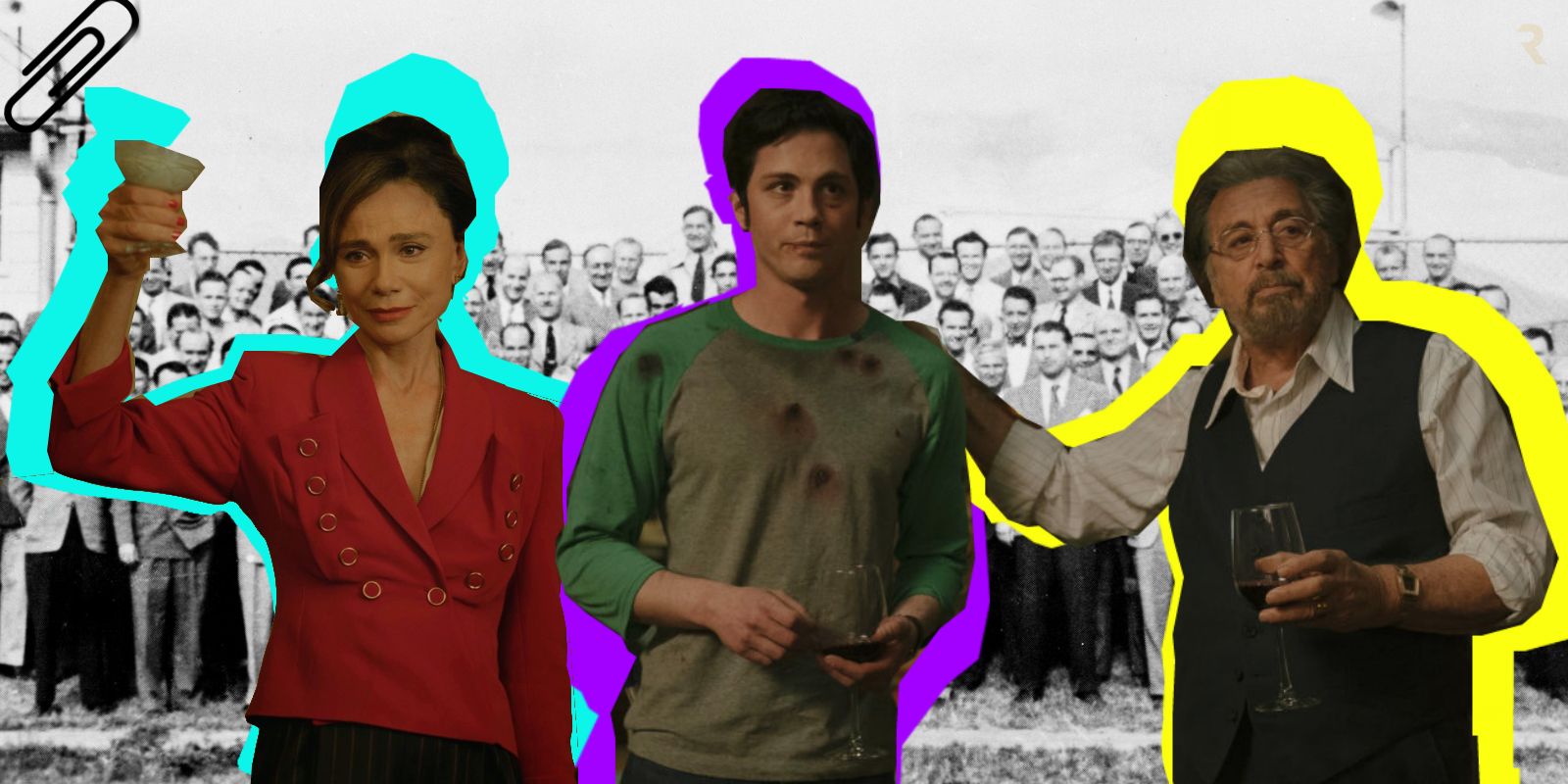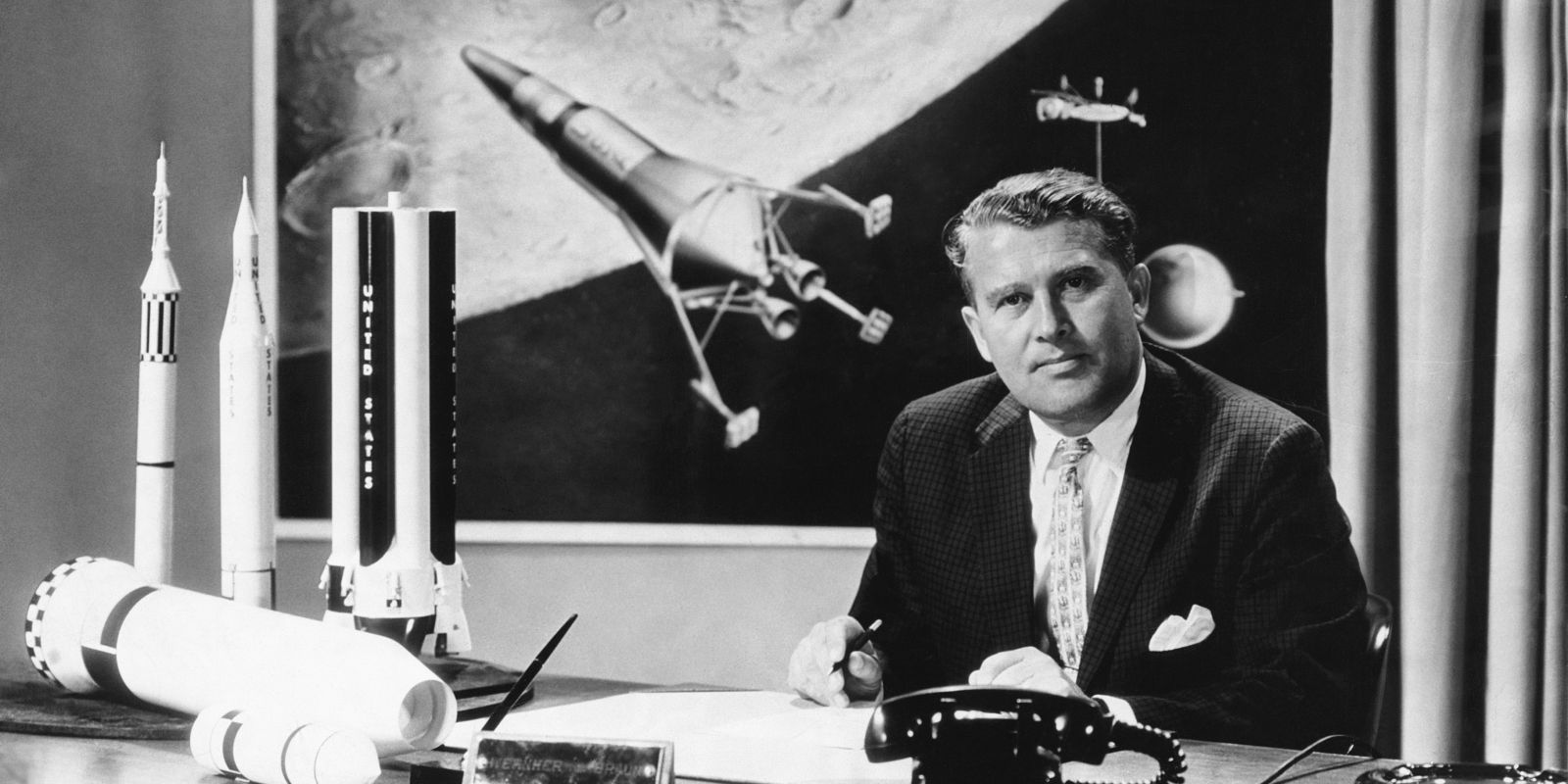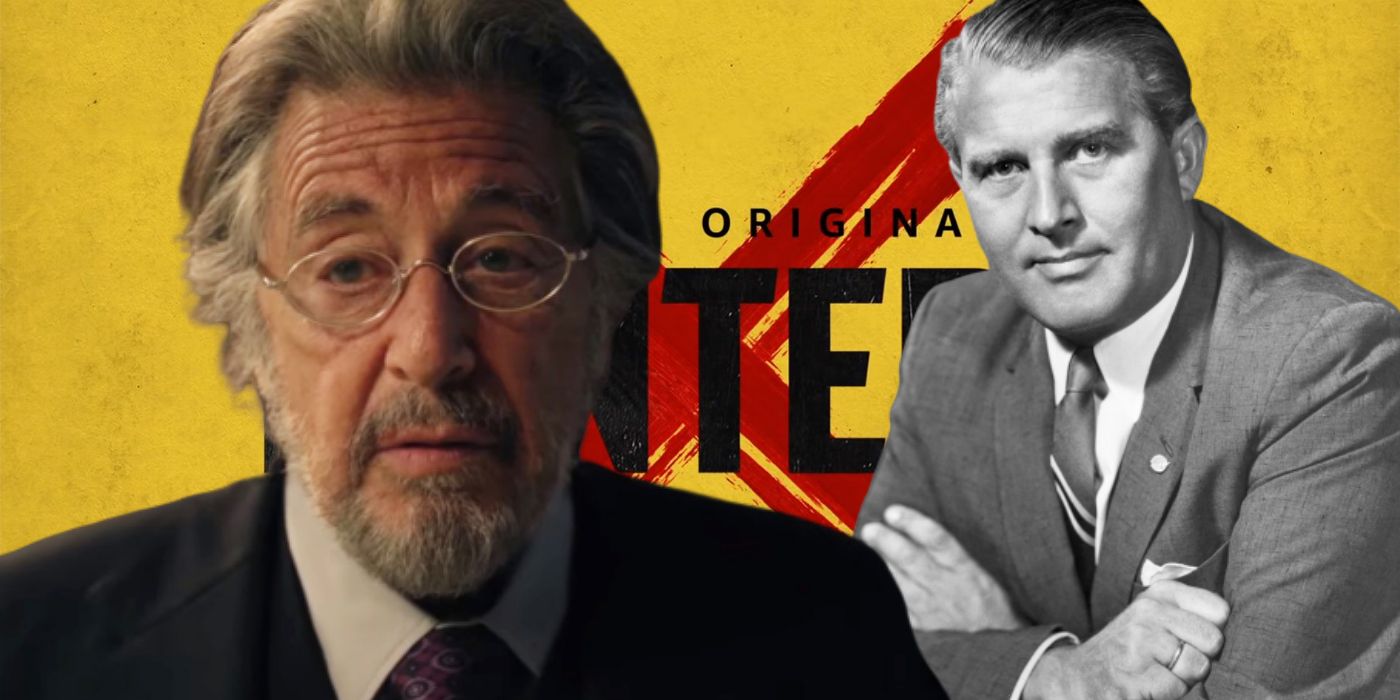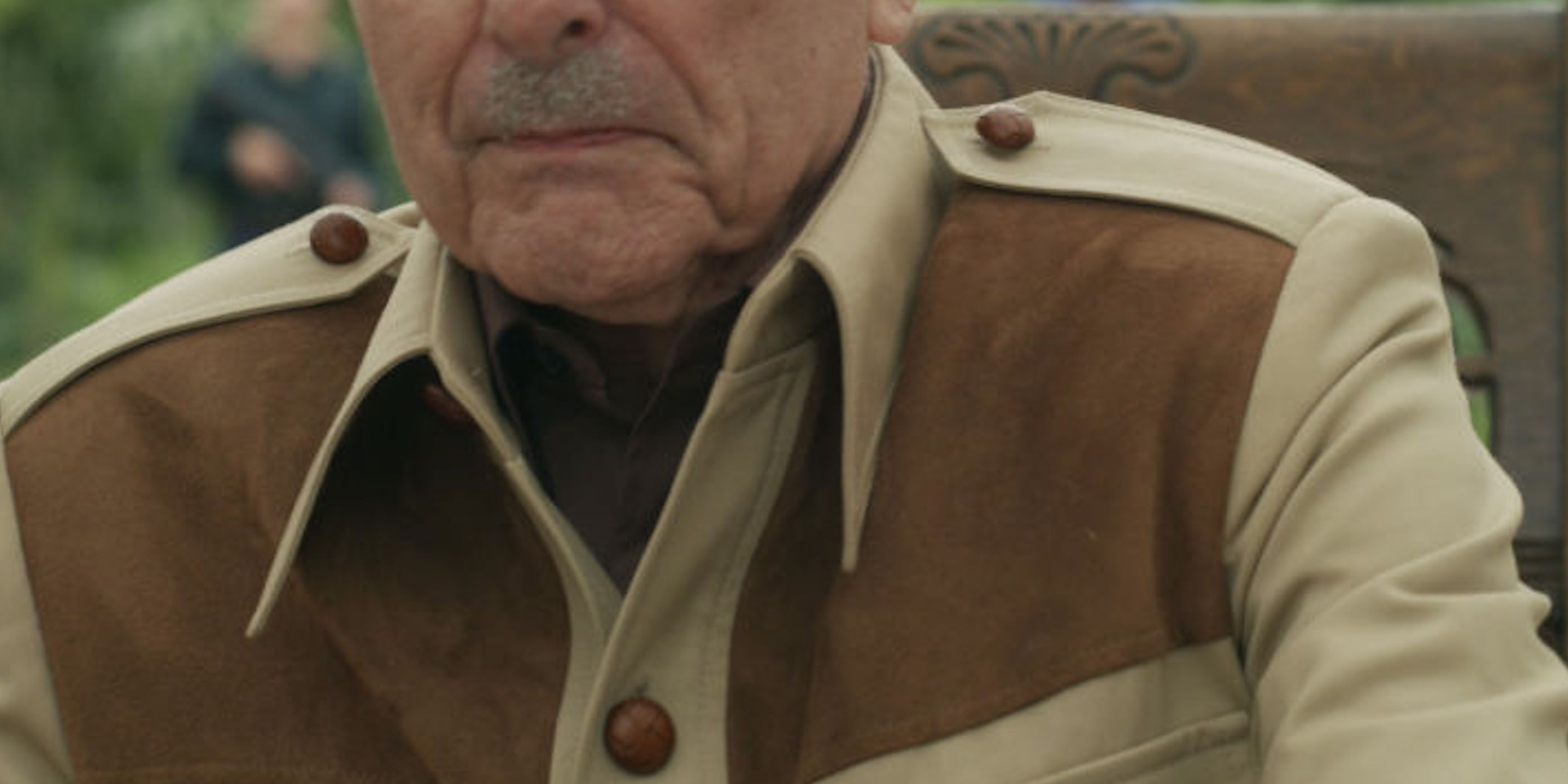Amazon’s Hunters, set in 1970s America, follows a group of Nazi hunters that discovers the thousands of Nazis who have infiltrated the United States, but how much of it is true? The story is highly stylized, Tarantino-esque in its blasé portrayal of violence, and a wild tale that has audiences wondering what really happened.
Hunters kicks off with Jonah (Logan Lerman) desperately seeking vengeance for the death of his grandmother. As he hunts the man who killed her, he discovers that sweet old Ruth (Jeannie Berlin) was part of an elite Nazi-hunting squad spearheaded by the wealthy Meyer Offerman (Al Pacino). The team, made up of the tech whiz Murrays (Saul Rubinek and Carol Kane), actor Lonny Flash (Josh Radnor), combat master Roxy (Tiffany Boone), weapons trained Joe (Louis Ozawa), and intelligence agent Sister Harriet (Kate Mulvany), has spent the last year locating and eliminating Nazis who have made a new life in America.
As Hunters progresses, the Hunt discovers that the Nazis were brought in by the American government via Operation Paperclip. They uncover a Nazi plot to infect millions with a deadly pathogen hidden in corn syrup, targeting inner cities across America. Although this seems far-fetched, not everything in Hunters is pure fiction.
Amazon's Hunters Is Not A True Story, But It's Inspired By One
Set in 1977, much of Hunters is framed by Jonah’s comic-book-laden point-of-view. The 1970s were known as the Bronze Age of Comics, an era in which darker plotlines and relevant social issues began to make their way into the panels. Hunters mirrors this tendency. Both Nazi hunter groups and Operation Paperclip have real historical foundations. The poverty in which Jonah and his grandmother live is true to life as over 200,000 New York-based Holocaust survivors lived below the poverty line. Although not caused by Nazis, the New York blackout of July 13th, 1977 is also real and sent the city into a panic.
The basis for American-born Nazi supporter Travis (Greg Austin) is also not fictional. The “Pro American Rally” took place during 1939 in New York, hanging a portrait of George Washington between American flags and swastikas. The Swiss National Bank really did make financial deals with Nazi Germany. The Seawater experiments referenced in Hunters were also real: camp prisoners were cruely injected with different types of sea water to test their body’s reaction.
Although Hunters has come under criticism for some its more far-fetched elements, the show elegantly uses elements of American history to instill itself with kernels of truth. Although there was no known Nazi plot to poison the corn syrup supplies, the 1970s are when the sugar substitute first made its way onto American shelves, and Germany did develop biological weapons during World War 2, even if they went unused over the course of the war. British soldiers uncovered 175 bunkers on the German-Polish border containing tabun, a new nerve agent that could kill a rabbit in minutes. In 1945, 530 tons of the stuff made its way to American soil.
Nazis Were In America Because Of Operation Paperclip
Operation Paperclip was an American government program that covertly smuggled over 1,600 Germans into America to avoid the Soviet Union getting its hands on Germany’s most brilliant minds. It was authorized by President Truman in 1945 and, although it claimed to exclude anyone who was an active member of the Nazi party, the reality was more ethically ambiguous. The Office of Strategic Services whitewashed any incriminatory evidence.
Several of the people brought over committed atrocities during the war. Arthur Rudolph, who led the team that built the Saturn V rocket, caused the death of 20,000 slave laborers; Kurt Debus, a rocket launch specialist, was an SS officer; Hubertus Strughold, eventually called “the father of space medicine”, conducted human experiments on prisoners at Auschwitz and Dachau, testing the body’s reaction to low temperature and pressure. Wernher von Braun (Victor Slezak) was a real scientist who, despite his affiliations with the Nazi party, was brought on to pioneer the 1969 Moon landing. The slave labor he used for his rocket-building in Germany led to the death of 60,000 people and, as proclaimed in Hunters, he really did appear on Walt Disney’s first episode of Tomorrowland.
What Amazon Actually Gets Right About Nazi Hunter Groups
Nazi hunter groups really did exist post-war, but they were far less fantastical. The most famous Nazi hunter in history is Simon Wiesenthal, who makes an appearance in Hunters episode 8, “The Jewish Question”. Shortly after being liberated from the Mauthausen concentration camp, Wiesenthal began to document the names of relevant Nazi officers and collaborators. His hunt was less the vigilantism of Meyer’s Bat Cave and more the paperwork collection of Ruth’s ark. After launching the Documentation Centre of the Association of Jewish Victims of the Nazi Regime in Vienna in the 1960s, he was a key player in the discovery of war criminals such as Karl Silberbauer, the officer who arrested Anne Frank, and Hermine Braunsteiner Ryan, a female guard known for kicking female prisoners to death who lived undercover in America for many years. The year Hunters takes place, Rabbi Marvin Hier actually started the Simon Wiesenthal Center in the United States, which was eventually headed by Nazi hunter Efraim Zuroff and aimed to “research the Holocaust and hate in a historic and contemporary context.”
Other Nazi hunters did engage in some of the more extreme practices portrayed in the show. The Murrays are likely based on Beate and Serge Klarsfeld, a married couple who spent decades bringing Nazi war criminals to justice including Klaus Barbie, the Gestapo officer who earned the nickname “the Butcher of Lyon.” Relying on subterfuge techniques including borrowing passports and disguising themselves as Nazis to oust other Nazis, the Klarsfelds were arrested multiple times, including for attempted kidnapping of SS officers.
Other hunting groups took a more aggressive approach. Tuviah Friedman, once called “The Merciless One”, worked alongside the Polish militia to track down Nazis after the war. He rounded up and tortured the ones he found, often beating them as he had been beaten when he was a prisoner. Eventually, Friedman turned away from violence and towards justice through the criminal system, working closely with Wiesenthal to help capture up to 250 war criminals. Jewish group Nakam, meaning vengeance in Hebrew, consisted of 50 young men and women spear-headed by Joseph Harmatz who sought to punish Nazis. They poisoned over 2,200 former SS men imprisoned an American prison-of-war camp in 1946, although the arsenic was faulty and none died.
Hitler In Argentina Explained: What The Real-Life Theories Say
The revelation in Hunters that Eva Braun (Lena Olin) and Adolf Hitler did not die, but instead escaped to Argentina takes its inspiration from a conspiracy theory that is still alive today. That Hitler did not kill himself but instead escaped was first proposed at a 1945 press conference by Marshal Georgy Zhukov, prompted by Joseph Stalin. Rejected by British papers, agent Hugh Trevor-Roper undertook a detailed investigation into the claim, finding it had no basis. Still, the conspiracy lived on. A 1945 letter addressed to a Chicago newspaper was intercepted by the United States Office of Censorship, claiming it found Hitler living in a hacienda 450 miles from Buenos Aires.
A declassified CIA document dated late 1955 included claims by Phillip Citroen, an alleged SS soldier, that Hitler was alive, having moved from Columbia to Argentina in January of that year. The file included a photograph of the man who was supposedly Hitler, named Adolf Schrïttelmayor. The flames of the Hitler conspiracy theory were fanned by 2009 evidence that a piece of skull in Moscow previously believed to have been Hitler’s was actually a woman’s.
Although most historians are extremely disparaging of this theory, many people have written about it. Journalist Gerrard Williams and military historian Simon Dunstan co-wrote Grey Wolf: The Escape of Adolf Hitler in 2014, making a case that the dictator escaped to Argentina alongside other powerful Nazis. Neo-Nazi Harry Cooper’s Hitler in Argentina: The Documented Truth of Hitler’s Escape from Berlin and conspiracy theorist Jerome Corsi’s Hunting Hitler: New Scientific Evidence That Hitler Escaped Nazi Germany both came out the same year, over sixty years after the Hitler’s official death in 1945. 2015 saw the rise of the History Channel’s Hunting Hitler a three-season exploration into classified documents and Hitler witnesses that explores the Fuhrer’s supposed escape to Argentina and plotting of a “Fourth Reich”.
The inspiration behind this likely comes from the actual documented escape of several Nazis to South American after the war. Josef Mengele, called the Angel of Death, escaped to Argentina in 1949 with the help of secret SS escape networks called ratlines, relocating throughout South America as he was pursued by Nazi hunter groups until his death by drowning in Brazil in 1979. The History channel claims that as many as 9,000 Nazis fled to South America for sanctuary. One of the scientists brought to the United States via Operation Paperclip, Walter Schreiber, actually ended up fleeing to Argentina himself after the Boston Globe published an expose on his horrific human experimentation at Ravensbrück camp. While there is no denying that Hunters takes several liberties with historical truth, it is astonishing how much the show was able to extract from real-life events.





